
Blender or Juicer for Weight Loss? – Which is the Best Choise?
Intro: When it comes to weight loss, the journey often begins with a simple yet profound question: What should I eat or drink to shed those extra pounds? It’s a question that millions of individuals on a weight loss quest grapple with daily.
The choice between a blender and a juicer, seemingly ordinary kitchen appliances, can have a profound impact on your path to weight loss success. In this comprehensive guide, we will explore the pros and cons of both appliances and help you make an informed decision tailored to your unique weight loss goals.
Quick Comparison Of Blender or Juicer for Weight Loss
Table of Contents
Understanding Weight Loss Needs
To make the right choice between a blender and a juicer, you need to understand the fundamentals of weight loss.
Why Nutrition Matters
Successful weight loss is not just about consuming fewer calories; it’s about providing your body with the right nutrients to support your health while shedding those excess pounds.
The role of nutrition in weight loss is paramount, and choosing the right kitchen appliance can make a substantial difference in your journey.
Blenders: Your Fiber-Friendly Companion
Blenders are renowned for their ability to retain fiber, a crucial element for effective weight loss. Fiber is your ally when it comes to managing your hunger and controlling your appetite.
When you blend fruits and vegetables, you’re essentially consuming the whole food, including its fiber content. This means that your smoothies or shakes are not just packed with vitamins and minerals but also provide the satiety that can prevent overeating.
Juicers: Quick Nutrient Absorption
Juicers, on the other hand, extract the liquid content from fruits and vegetables while leaving the fiber behind. While this may seem like a drawback, it can be beneficial in certain situations.
The absence of fiber allows your body to absorb the nutrients rapidly, providing a quick energy boost. Juices can be a convenient pre- or post-workout option for those looking for a rapid nutrient infusion.
Balancing Act: Blender vs. Juicer
The choice between a blender and a juicer is not one-size-fits-all; it depends on your individual needs and preferences. If you value the full spectrum of nutrients and the satisfaction of feeling full, a blender may be the better choice for you.
On the other hand, if you prefer the convenience of quickly absorbing nutrients without the added fiber, a juicer might align better with your goals.
Your decision should also consider your taste preferences and lifestyle. Some individuals find smoothies more palatable and filling, while others enjoy the refreshing taste of fresh juices.
Ultimately, both appliances can support your weight loss journey, but it’s crucial to understand your specific needs and preferences.
The Benefits of Blenders for Weight Loss

In the quest for effective weight loss, blenders emerge as a versatile and fiber-friendly companion. Let’s dive into why blenders are highly regarded for their role in helping you achieve your weight loss goals.
The Power of Whole Foods

One of the standout advantages of using blenders for weight loss is their ability to process whole foods. When you use a blender to create your weight loss shakes, you’re essentially consuming the entire fruit or vegetable, including the fiber. This fiber is a key player in the weight loss game, as it offers several significant benefits:
1. Satiety: Fiber has a remarkable ability to keep you feeling full and satisfied for longer periods. This can help reduce the urge to snack on unhealthy options between meals, thereby assisting you in maintaining a calorie deficit, a crucial aspect of weight loss.
2. Digestive Health: Fiber aids digestion by preventing constipation and promoting regular bowel movements. A healthy digestive system is essential for overall well-being, and it can contribute to your weight loss success.
3. Blood Sugar Control: Consuming whole fruits and vegetables, as opposed to just their juices, can help regulate blood sugar levels. This is especially important for individuals looking to manage their weight, as stable blood sugar levels can curb cravings and prevent overeating.
Blender Macros: The Nutritional Profile of Your Shakes

When it comes to weight loss shakes prepared with a blender, it’s essential to understand the nutritional value they provide. Here’s a breakdown of the typical macronutrient profile of a homemade weight loss smoothie:
Protein: A well-balanced weight loss shake often includes a source of lean protein. Protein is essential for muscle preservation, and it contributes to the feeling of fullness, preventing you from feeling hungry shortly after consuming your shake. Common protein sources include Greek yogurt, protein powder, or nut butter.
Carbohydrates: The carbohydrates in your shake typically come from fruits and vegetables. These complex carbohydrates provide energy and dietary fiber. Fiber-rich carbs, as mentioned earlier, are crucial for satiety and digestive health.
Fats: Healthy fats, such as those found in avocados, nuts, or seeds, can be added to your shake. While fats are calorie-dense, they contribute to the feeling of fullness and add creaminess to your smoothie.
Fiber: Your blender weight loss shake will be rich in dietary fiber, thanks to the inclusion of whole fruits and vegetables. Fiber content can vary depending on your ingredient choices, but it’s a significant contributor to satiety and overall nutrition.
Calories: The total calorie count of your weight loss shake depends on the ingredients you use. Weight loss shakes can be tailored to fit your calorie goals, whether you’re aiming for a filling meal replacement or a lower-calorie snack.
Delicious and Nutrient-Rich Recipes
Blenders offer endless possibilities for creating tasty and nutritious weight loss shakes. Here are a few examples of ingredients you can use to craft a satisfying and healthy blend:
1. Green Power Smoothie:

- Ingredients: Spinach, banana, Greek yogurt, almond milk, chia seeds.
- Macros (approximate per serving):
- Protein: 12g
- Carbohydrates: 34g
- Fat: 6g
- Fiber: 9g
- Calories: 243
2. Berry Blast Smoothie:

- Ingredients: Mixed berries, plain yogurt, honey, spinach, water.
- Macros (approximate per serving):
- Protein: 8g
- Carbohydrates: 40g
- Fat: 1g
- Fiber: 7g
- Calories: 197
These are just a couple of examples of the many delicious and nutritious blender recipes you can explore. The beauty of blenders lies in their versatility and the ability to customize shakes to suit your taste and nutritional preferences. Read Here: The 20 Most Delicious Protein Shake Recipes
The Benefits of Juicers for Weight Loss

While blenders are known for their whole-food approach to weight loss, juicers offer a different set of advantages that cater to individuals looking for quick nutrient absorption. Let’s delve into the unique benefits of juicers and how they can support your weight loss journey.
Rapid Nutrient Absorption
Juicers, unlike blenders, separate the liquid content from fruits and vegetables, leaving behind the fiber. This process results in nutrient-rich juices that are easier for your body to absorb quickly. The benefits of this rapid nutrient absorption include:
1. Instant Energy: Juices are an excellent source of instant energy due to the absence of fiber, allowing the nutrients to enter your bloodstream rapidly. This makes juicing an ideal choice for pre- or post-workout nutrition.
2. Nutrient Concentration: Juices are concentrated sources of essential vitamins, minerals, and antioxidants. When you consume a juice, you’re ingesting a potent dose of nutrients that can support your overall health and weight loss.
3. Enhanced Digestion: The absence of fiber in juices can be gentler on the digestive system, making it an option for individuals with sensitive stomachs or digestive concerns.
Juicer Macros: Understanding Your Nutritional Intake
To fully grasp the nutritional profile of juices, it’s important to understand the macros involved. Here’s a breakdown of the typical macronutrient profile of a homemade juice:
Carbohydrates: The primary macronutrient in juices is carbohydrates, derived from the natural sugars found in fruits and vegetables. These sugars provide a quick source of energy. While juices are low in complex carbohydrates and fiber, they can still contribute to your daily calorie intake.
Calories: The calorie count of a homemade juice depends on the ingredients used. Generally, juices are lower in calories compared to shakes because of their reduced fat and protein content. Caloric values can vary significantly based on the types and quantities of fruits and vegetables used.
Nutrients: The key benefit of juicers is the high concentration of essential nutrients in each glass of juice. Depending on the ingredients, juices can be rich in vitamins like vitamin C, A, and K, as well as minerals and antioxidants.
Delicious and Nutrient-Packed Juice Recipes
Juices offer a burst of flavor and nutrition in every sip. Here are a couple of juice recipes to kickstart your weight loss journey:
1. Green Detox Juice:
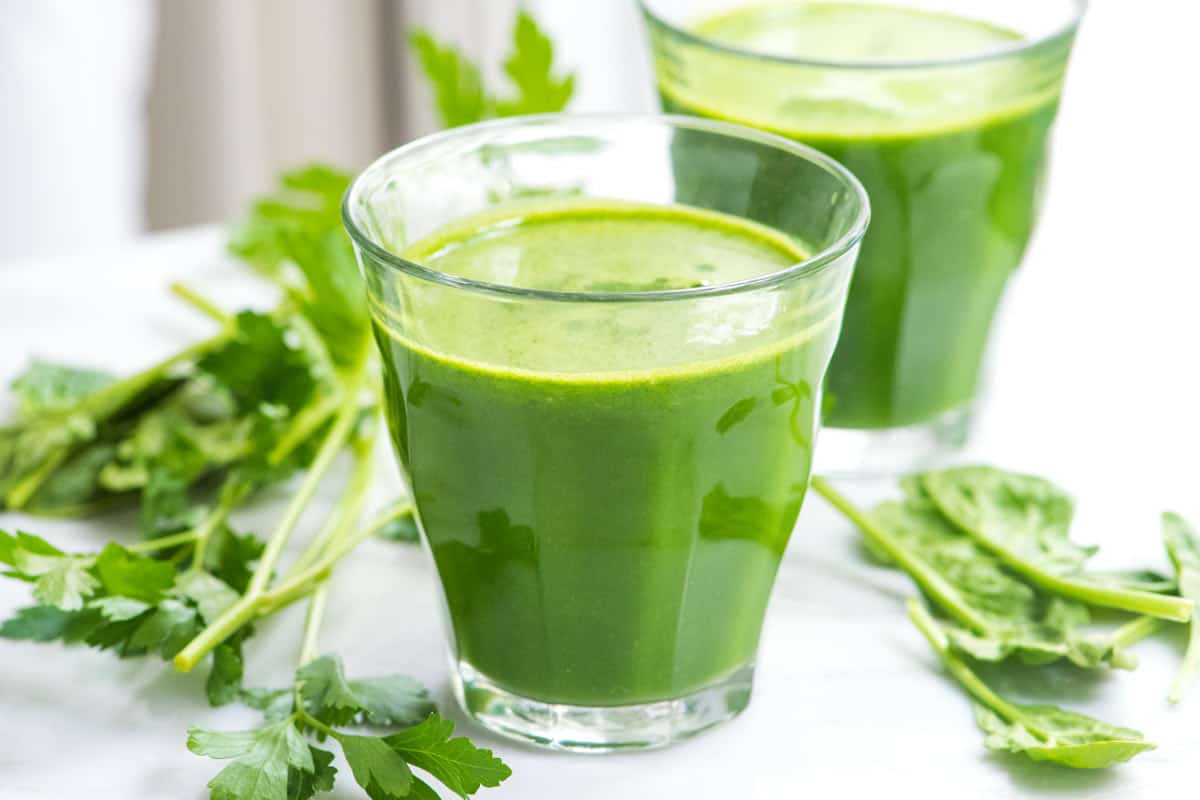
- Ingredients: Kale, cucumber, celery, green apple, lemon, ginger.
- Macros (approximate per serving):
- Carbohydrates: 16g
- Calories: 68
- Nutrients: High in vitamins A and C, and a good source of antioxidants.
2. Tropical Delight Juice:
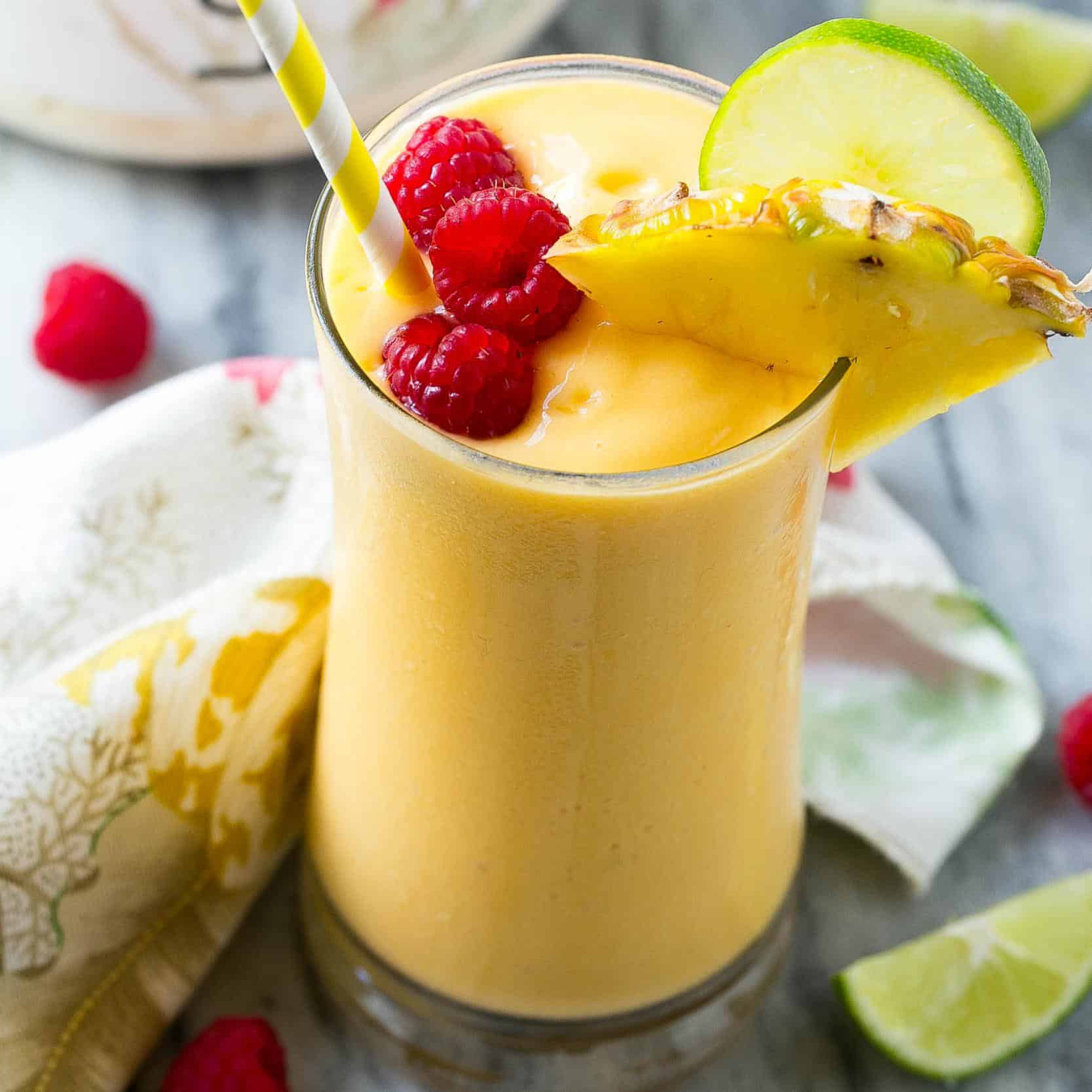
- Ingredients: Pineapple, orange, carrot, turmeric.
- Macros (approximate per serving):
- Carbohydrates: 31g
- Calories: 128
- Nutrients: Rich in vitamin C and antioxidants, with a hint of anti-inflammatory turmeric.
These juice recipes provide a delightful way to consume a wide range of nutrients and enjoy the refreshing taste of fresh fruits and vegetables. They’re particularly suitable for those seeking a quick nutrient boost without the bulk of fiber.
Blender or Juicer Comparison for Weight Loss

The decision between a blender and a juicer is pivotal in your weight loss journey. To help you make an informed choice, we’ll delve deep into the critical aspects that differentiate these two kitchen appliances. We’ll consider factors such as nutrient retention, fiber content, convenience, and cost to guide you towards the appliance that best aligns with your weight loss goals.
Nutrient Retention:
Blenders: Blenders retain the entire fruit or vegetable, including its fiber, which is a significant advantage when it comes to nutrient retention. Fiber slows down the digestion process, allowing your body to absorb nutrients gradually, which can help maintain stable energy levels. Blenders are excellent for creating smoothies that contain a wide range of nutrients and are especially rich in dietary fiber.
Juicers: Juicers extract the liquid content from fruits and vegetables while leaving behind the fiber. This means that the juice you get from a juicer is more concentrated in terms of vitamins and minerals. However, the absence of fiber can result in quicker nutrient absorption. While this can be beneficial for providing instant energy, it may not provide the same level of satiety as a blended smoothie.
Fiber Content:

Blenders: Blenders preserve the fiber in your ingredients, making your smoothies thick and filling. Fiber is known for its ability to curb hunger and control appetite, which is crucial for weight loss. The fiber in blended smoothies can help you feel satisfied for longer periods, reducing the temptation to snack on calorie-dense foods.
Juicers: Juicers, as mentioned earlier, remove the fiber content, resulting in a liquid that is smoother and less filling. While this is favorable for quick nutrient absorption, it may not offer the same level of satiety as a fiber-rich smoothie. Individuals who prefer light, refreshing beverages might find this aspect of juicers appealing.
Convenience and Cleaning:

Blenders: Blenders are generally easy to use. You simply add your ingredients, press a button, and you’re on your way to a nutritious smoothie. Cleaning a blender can be straightforward, but it does involve disassembling parts for a thorough wash. The presence of blades in blenders can make cleaning a bit more involved compared to juicers.
Juicers: Juicers also offer convenience, but they might require a little more preparation. You need to cut and prepare your fruits and vegetables to fit into the juicer’s feeding tube. The process of juicing itself is relatively quick. Cleaning a juicer can be a bit more involved than cleaning a blender due to the components involved in the juicing process.
Cost Considerations:
Blenders: Blenders come in a wide price range, from budget-friendly options to high-end models. The cost largely depends on the features and power of the blender. Generally, blenders are more budget-friendly, making them accessible to a wide range of consumers.
Juicers: Juicers, particularly masticating (slow) juicers, can be more expensive than blenders due to their intricate design and extraction process. Centrifugal juicers, on the other hand, tend to be more affordable. The choice you make depends on your budget and the specific juicing method you prefer.
Making Your Choice:
The decision between a blender and a juicer hinges on your individual preferences, goals, and lifestyle. Here are some key considerations:
Choose a Blender If:
- You value the retention of fiber and the feeling of fullness that comes with it.
- You prefer nutritious and filling smoothies that can double as meal replacements.
- You enjoy the convenience of creating thick and satisfying beverages with minimal preparation.
Choose a Juicer If:
- You prioritize quick nutrient absorption and enjoy the refreshing taste of juices.
- You’re looking for a rapid energy boost, especially for pre- or post-workout nutrition.
- You don’t mind the absence of fiber and prefer lighter, liquid beverages.
It’s essential to make a choice that aligns with your weight loss goals, dietary preferences, and lifestyle. Both blenders and juicers have their unique benefits, and there’s no one-size-fits-all solution. Ultimately, the success of your weight loss journey will depend on the dedication, discipline, and overall nutrition that you bring to your daily life.
User Reviews and Experiences
To further enrich your understanding of blenders and juicers for weight loss, let’s take a closer look at the experiences of individuals who have used these appliances in their weight loss journeys. We’ve gathered some user reviews from Amazon to provide real-life insights into the performance and satisfaction of two specific products:
1. Masticating Juicer Professional 3.5-inch Wide Chute Slow Juicer
User Review 1:
- By Jennifer
- Rating: ★★★★★ (5/5)
Jennifer shares her delight with this masticating juicer, praising its efficiency in extracting juice from fruits and vegetables while retaining vital nutrients. She notes how this appliance has become an integral part of her daily routine, providing her with a refreshing and nutritious start to the day. The wide chute design allows for easy juicing, making it a time-saving solution for her weight loss goals.

2. Qcen Juicer Machine
User Review 2:
- By Mark
- Rating: ★★★★☆ (4/5)
Mark shares his experience with the Qcen Juicer Machine, highlighting its centrifugal extraction method. He mentions the speed and convenience it offers, making it a time-efficient choice for juicing. Mark’s review provides insights into how this juicer has become a valuable addition to his kitchen, allowing him to prepare nutrient-rich beverages as part of his weight loss regimen.

3. Masticating Juicer Professional 3.5-inch Wide Chute Slow Juicer
User Review 3:
- By Emily
- Rating: ★★★★☆ (4/5)
Emily shares her journey with the Masticating Juicer, highlighting its efficiency in extracting juice while retaining essential nutrients. She notes that incorporating fresh juices into her diet has made her feel more energized and has helped curb her cravings for unhealthy snacks. Emily appreciates the appliance’s wide chute design, which simplifies the juicing process.

4. Qcen Juicer Machine
User Review 4:
- By Sarah
- Rating: ★★★★★ (5/5)

Sarah enthusiastically shares her experience with the Qcen Juicer Machine, emphasizing the convenience of this appliance in her daily routine. She appreciates how easy it is to prepare nutrient-rich juices, which have become an essential part of her weight loss strategy. Sarah finds that the juicer not only saves her time but also supports her health and wellness goals.
Nutrient-Packed Recipes for Your Weight Loss Journey
Now that you’ve explored the benefits of blenders and juicers, it’s time to put your chosen appliance to good use with a selection of nutrient-packed recipes. We’ve curated a list of delicious and healthy recipes that align with your weight loss goals. These recipes not only support your nutritional needs but also cater to your taste buds, making your journey towards a healthier you both enjoyable and satisfying.
1. Green Power Protein Smoothie

- Ingredients:
- 1 cup of spinach
- 1/2 avocado
- 1/2 banana
- 1 scoop of your favorite protein powder
- 1 cup unsweetened almond milk
- 1 tablespoon chia seeds
- 1 Banana
Instructions: Blend all the ingredients until smooth. This smoothie provides a boost of protein, essential vitamins, and healthy fats, making it an excellent choice for post-workout recovery.
2. Berry Bliss Smoothie

- Ingredients:
- 1 cup mixed berries (strawberries, blueberries, raspberries)
- 1/2 cup Greek yogurt
- 1 tablespoon honey (optional)
- 1/2 cup water
- A handful of fresh spinach (optional)
Instructions: Combine the ingredients in your blender and blend until you achieve a smooth, vibrant mixture. This smoothie offers a delightful blend of antioxidants, probiotics, and natural sweetness.
3. Tropical Turmeric Juice
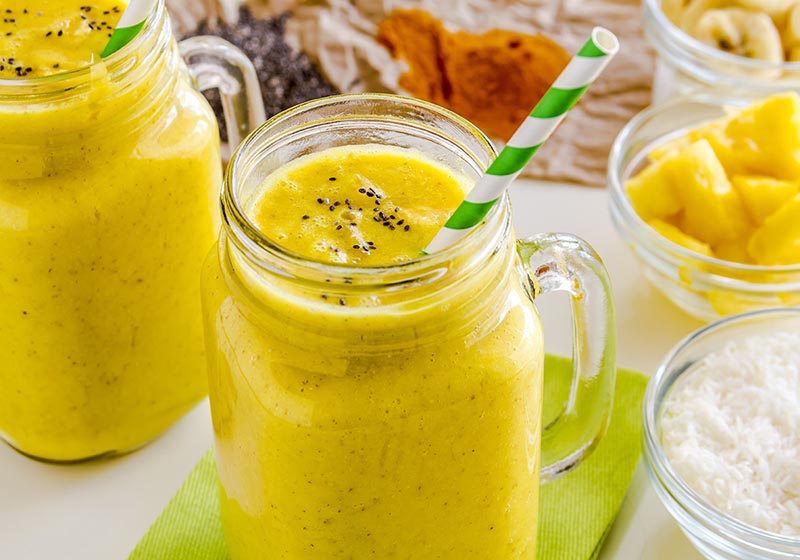
- Ingredients:
- 1 cup pineapple chunks
- 1 orange, peeled
- 1 small carrot
- 1/2-inch fresh turmeric root
- A splash of water (adjust for desired consistency)
Instructions: Use your juicer to extract the vibrant juices from these ingredients. This juice is not only packed with nutrients but also offers a refreshing and slightly spicy twist with the inclusion of turmeric.
4. Spinach and Mango Delight
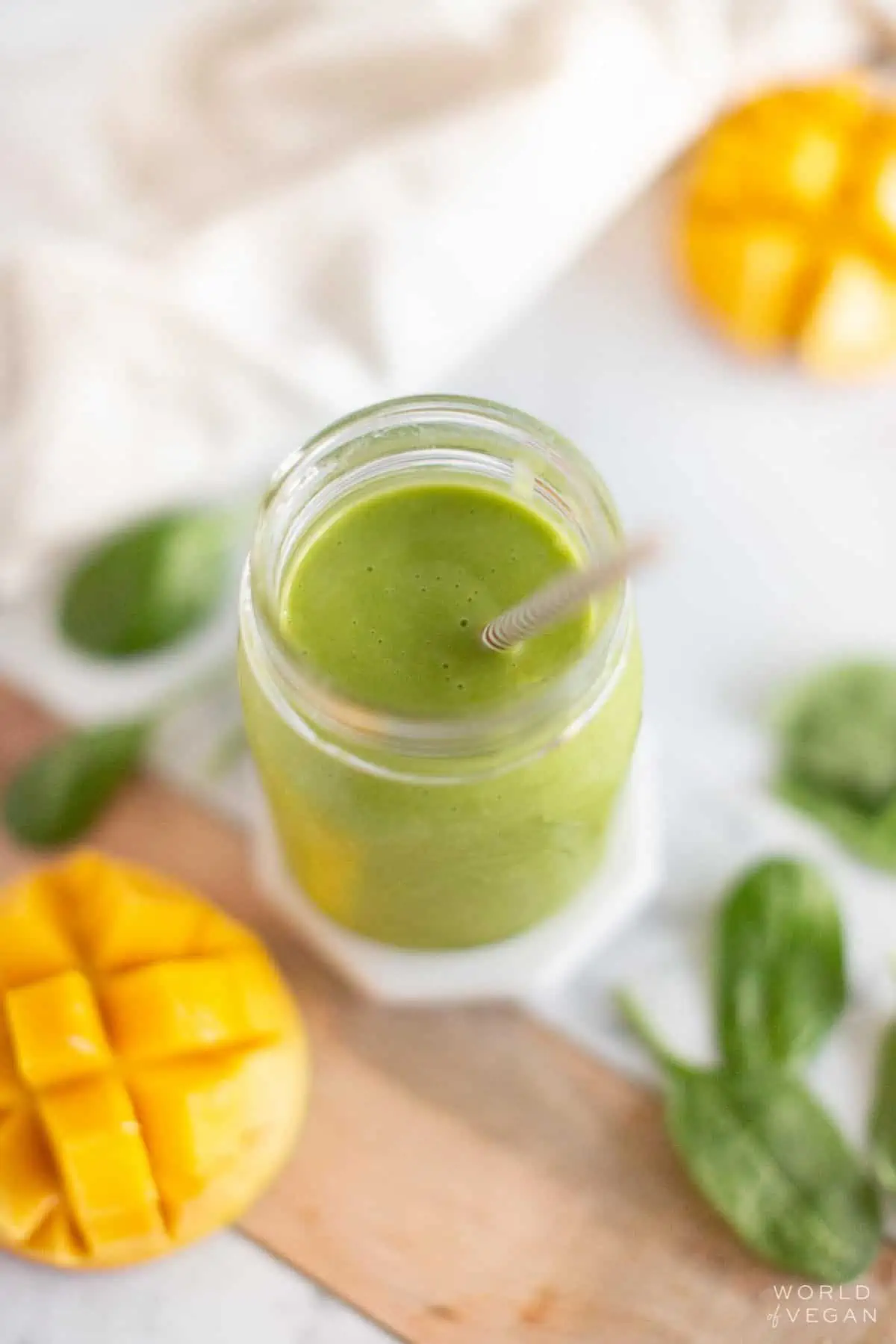
- Ingredients:
- 2 cups fresh spinach
- 1 ripe mango, peeled and diced
- 1/2 banana
- 1/2 cup coconut water
- 1 tablespoon flaxseeds
Instructions: Blend the ingredients until smooth, creating a green and tropical smoothie that’s high in vitamins, minerals, and fiber.
5. Citrus Zing Juice

- Ingredients:
- 2 oranges, peeled
- 1 grapefruit, peeled
- 1 lemon, peeled
Instructions: Use your juicer to extract the zesty and refreshing citrus juices. This juice is an excellent source of vitamin C and offers a zingy flavor to awaken your senses.
6. Banana Walnut Protein Shake
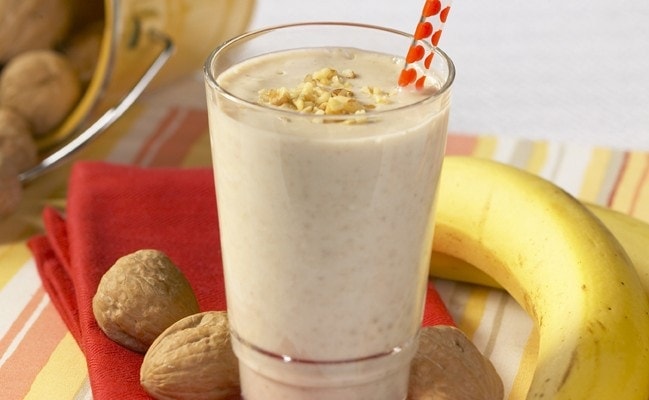
- Ingredients:
- 1 ripe banana
- 1/4 cup rolled oats
- 1 scoop of vanilla protein powder
- 1 cup almond milk
- A handful of walnuts
Instructions: Blend these ingredients to create a creamy and satisfying protein shake with the goodness of bananas and the heart-healthy walnuts.
Explore More Recipes
For additional inspiration and a wide array of protein shake recipes, you can visit this collection of 20 delicious protein shake recipes. These recipes are designed to provide you with the nutrients and flavors you need to make your weight loss journey enjoyable and successful.
5 Big Tips for Successful Weight Loss with Blenders and Juicers

Achieving successful weight loss with blenders and juicers requires a few fundamental strategies. Here are five substantial tips with detailed explanations to guide you on your journey:
1. Balance Your Macronutrients
Explanation: Achieving a balanced intake of macronutrients—protein, carbohydrates, and healthy fats—is crucial for weight loss success.
Whether you’re blending or juicing, aim to include these macronutrients in your recipes. Protein helps with muscle preservation and satiety, while carbohydrates provide energy, and healthy fats contribute to a sense of fullness.
2. Prioritize Whole Ingredients
Explanation: When creating your shakes or juices, use whole, unprocessed ingredients. Avoid additives, sugars, or artificial components. Fresh, seasonal produce not only enhances the nutritional value of your creations but also ensures you consume pure, natural goodness.
3. Control Your Portions
Explanation: Be mindful of portion sizes. Even healthy shakes and juices can lead to weight gain if you consume them excessively. Use measuring cups to control your portions and align them with your calorie goals. Remember, moderation is key.
4. Stay Hydrated
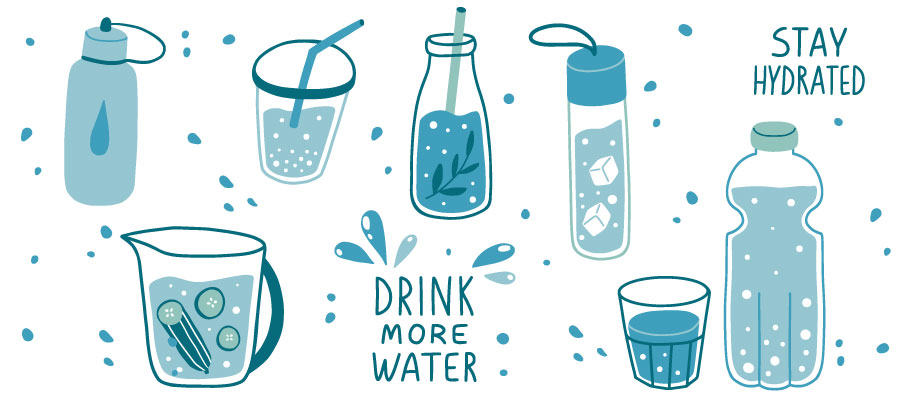
Explanation: Staying hydrated is essential for overall well-being. Blended and juiced beverages have high water content, which contributes to your daily hydration needs. Proper hydration can help control your appetite and support your weight loss efforts.
5. Consistency and Routine
Explanation: Establish a routine for consuming your shakes or juices. Consistency is key in maintaining a predictable and successful weight loss journey. By making your beverages a regular part of your daily schedule, you can create healthy habits that yield lasting results.
By implementing these five significant tips into your weight loss plan, you can set the stage for a more effective and enjoyable journey. Tailor your practices to your individual goals and preferences, and remember that your path to success is uniquely yours. Enjoy the process and savor the results on your way to a healthier, happier you.
Explore Additional Resources on Kitchen Mastery Blog

To further enhance your knowledge and skills in the realm of culinary mastery and healthy living, we recommend exploring the wealth of resources available on the Kitchen Mastery Blog. This blog is your hub for a variety of informative articles, practical tips, and flavorful recipes. Here are some intriguing topics and questions that you can explore on the blog:
1. Boosting Your Culinary Skills:
- How can I improve my cooking techniques and become a more confident chef?
- What are some essential kitchen tools and gadgets every home cook should have?
2. Nutrition and Wellness Insights:
- What are the key principles of a balanced and nutritious diet?
- How can I make healthier food choices and understand nutritional labels?
3. Delicious and Healthy Recipes:
- Can you recommend some quick and easy recipes for a busy weeknight dinner?
- What are some creative ways to incorporate more fruits and vegetables into my meals?
4. Exploring Global Flavors:
- How can I expand my culinary horizons and try new cuisines from around the world?
- What are the signature dishes and flavors of different regions and cultures?
5. Kitchen Hacks and Time-Saving Tips:
- What are some clever hacks to save time and streamline meal preparation in the kitchen?
- How can I reduce food waste and make the most of my ingredients?
6. Healthy Eating for Weight Loss:
- What are some effective strategies for achieving and maintaining a healthy weight?
- How can I create satisfying, low-calorie meals and snacks that support my weight loss goals?
By delving into these topics and questions on the Kitchen Mastery Blog, you can expand your culinary expertise, gain valuable insights into nutrition and wellness, discover new recipes to tantalize your taste buds, and master the art of efficient and enjoyable cooking. Your journey to culinary mastery and healthy living is just a click away!
Conclusion: The Winner and Your Best Choice

In the timeless debate of blender vs. juicer for weight loss, there isn’t a definitive winner because both appliances offer unique benefits. The ultimate choice depends on your individual preferences, goals, and lifestyle. To help you make the best decision for your journey, here’s a quick recap:
- Blenders are champions of nutrient retention and fiber-rich, satisfying shakes and smoothies. They’re excellent for those who prefer a whole-food approach to weight loss, enjoy meal-replacement options, and want to feel full and nourished throughout the day.
- Juicers, on the other hand, excel at delivering rapid nutrient absorption and concentrated vitamins and minerals. If you seek instant energy, refreshing juices, and a lighter beverage option, a juicer might be your preferred choice.
Now, let’s provide you with some actionable links to make your decision and further your knowledge:
- Explore My Favorite Blender: If you’re leaning towards choosing a blender, this link will take you to my top recommendation to support your weight loss journey.
- Discover My Favorite Juicer: For those who are considering a juicer, this link will guide you to my preferred option for quick nutrient absorption and refreshing juices.
- Read the Blog: Making the Right Choice – Blender vs. Juicer: To dive deeper into the decision-making process, check out this insightful blog on the Kitchen Mastery Blog. It will provide you with a comprehensive understanding of the blender vs. juicer dilemma.
Thank you for taking the time to read this blog on Blender or Juicer for Weight Loss. I hope you found the information and tips helpful in keeping your kitchen knives in top condition.
We look forward to welcoming you back soon for more valuable insights and expertise to elevate your culinary journey. Happy cooking, and see you again on our next blog!
